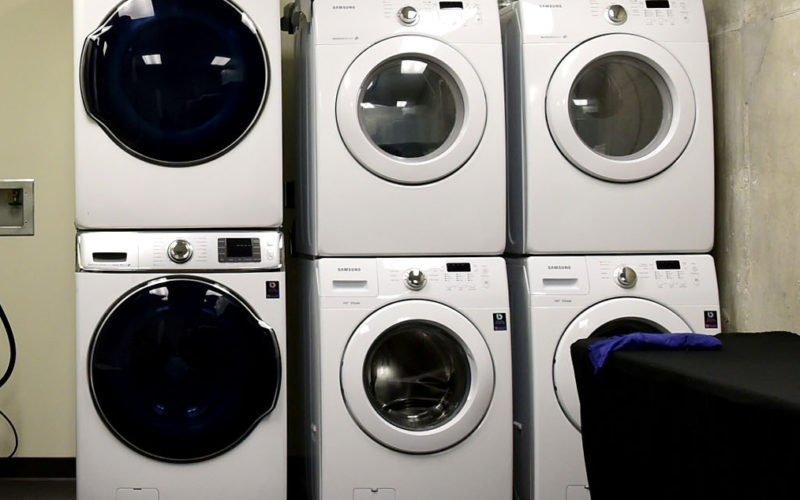Q. In your recent column on washing white T-shirts, you did not say how much bleach to put in a load. My wife passed away, so I am learning. Please tell me the amount I’m supposed to use. Is a cup about right? Thank you.
A. No! Do not use that much chlorine bleach in any load of white garments. The right amount is closer to ¼ cup. Bleach is an effective product, but potentially dangerous if used incorrectly. “Incorrectly” means both using too much and also allowing even a small amount to land directly onto a garment (including what you are wearing while you’re doing your laundry). Carefully pour it into the liquid bleach dispenser at the top of the washing machine or into the water before you add the clothes.
There are many other “secrets” and hints that I often pass on to those moving away from home for the first time . . . and to those discovering their laundry room for the first time.
- SORT your clothes into four separate color categories: whites, lights, darks, and reds. I know this sounds like a nuisance (you may do a load of reds only once a month), but believe me, the extra effort is well worth your time. One red sock in a white load can result in a pile of pink clothes – not the ideal color for your best polo shirts and cotton underwear. While that example might be obvious, the problem is often more subtle; you may notice that your whites are not as white as they once were, probably due to one or two colored items in a load of whites.
- PRE-TREAT ANY STAINS with a pre-treatment product or by simply pouring a bit of your favorite detergent directly onto the stained spot. Allow the garment to sit anywhere from 15 minutes to a few days until you are ready to do your next wash load.
- SET THE CONTROLS on the washing machine to the appropriate setting. Use “normal” for most clothes, but be sure to adjust the setting for delicate items. “Delicate” does not mean frilly or feminine garments. A favorite cotton sweater can qualify. When I wash a sweater or any other garment that seems to warrant extra attention (perhaps because it has nail-heads or some other embellishment), I first turn the item inside out; I slip it into a protective zippered mesh laundry bag; and then I add an old white terrycloth towel to the load (a towel that I do not care about) to help “scrub” the garment.
- SELECT the right water temperature and laundry product. Check the care label.
1. Even though hot water is often recommended for whites, I never use it because I believe it shrinks clothes and is hard on them.
2. Use warm water for most laundry.
3. Cold water helps keep dark- or bright-colored dyes from running.
4. A special laundry product called “Woolite darks” really does keep dark clothes from fading. - LIQUID BLEACH is only for all-white wash loads. Even the smallest amount of color in a garment (such as a colored stripe on the collar of a white polo shirt) tells you not to use any liquid bleach.
- WHEN DRYING, use dryer sheets or those little reusable plastic dryer balls to help keep clothes from wrinkling. Do not over-dry. Remove clothes promptly from the dryer (perhaps while they are still very slightly damp), and hang on a padded hanger or lay flat to further avoid wrinkling and shrinking. You can use your hands to smooth out and hand “iron” knit items. Certain clothes, such as socks and anything with elastic, ideally should not go into the dryer at all; I hang them to dry.
- IF YOU ARE DOING ANY TOUCH-UP IRONING on a garment, such as the collar of a no-iron dress shirt, it will be much easier to iron and the finished result will be even better if you iron it while it is still the slightest bit damp.
Good luck!
Please send your men’s dress and grooming questions to MALE CALL: Lois.Fenton@prodigy.net









